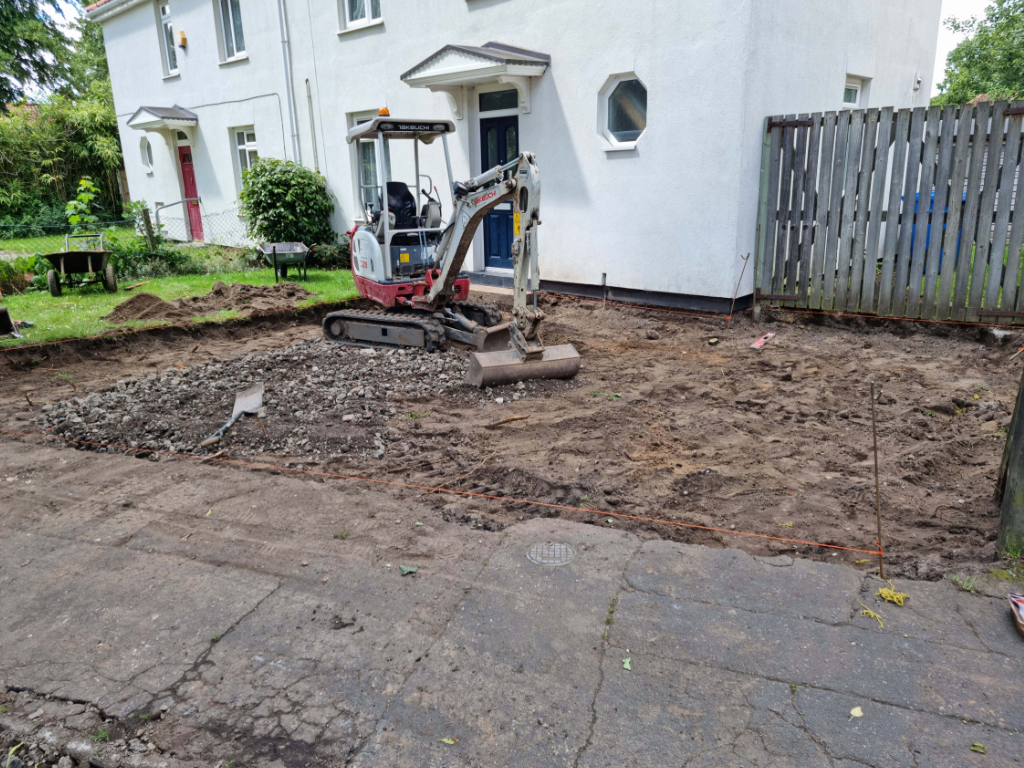Can You Resurface a Tar and Chip Driveway?
A tar and chip driveway is a popular choice for homeowners seeking a durable, low-maintenance, and visually appealing surface. Known for its textured appearance and excellent grip, this type of driveway offers long-lasting performance even under heavy use. However, over time, exposure to weather, traffic, and general wear can cause it to lose its sharp appearance or develop minor imperfections. The question many property owners ask is — can you resurface a tar and chip driveway instead of replacing it entirely? At Bury St Edmunds Driveway Solutions, we often help homeowners across Bury St Edmunds, Suffolk, make this decision with professional guidance and expert resurfacing services.
Understanding Tar and Chip Driveways
A tar and chip driveway, also known as “chip seal,” is made by applying a layer of hot bitumen (tar) followed by a layer of stone chips. These stones are then rolled into the surface, creating a strong, weather-resistant, and aesthetically pleasing finish. The natural look of the stones makes tar and chip ideal for both rural properties and modern homes, blending well with surrounding landscapes.
Although extremely durable, all surfaces eventually show signs of age. Cracking, loose stones, or faded colouring can appear after years of use — particularly in areas with fluctuating weather conditions like Suffolk.
Can You Resurface a Tar and Chip Driveway?
In most cases, yes — tar and chip driveways can be resurfaced, but it depends on the current condition of the base and surface layers. Resurfacing involves applying a new coat of bitumen and fresh aggregate (stone chips) over the existing surface. This process can rejuvenate the driveway, restoring its appearance and functionality without the need for a full replacement.
However, the success of resurfacing depends on several key factors:
1. The Condition of the Base Layer
If the foundation beneath your driveway is still solid and stable, resurfacing can be an excellent solution. But if the base has started to deteriorate — for example, showing deep cracks, rutting, or soft spots — resurfacing alone may not be sufficient. In such cases, the damaged areas may need to be repaired or reinforced before applying the new surface layer.
2. The Extent of Surface Damage
Minor issues such as loose stones, small cracks, or light fading can often be addressed through resurfacing. However, if the driveway has extensive cracking or has suffered from drainage problems, a more thorough restoration may be necessary. A professional assessment from Bury St Edmunds Driveway Solutions can determine whether resurfacing is the right option for your specific situation.
3. Drainage and Slope Considerations
For a long-lasting result, the existing driveway must have proper drainage and a stable gradient. If water tends to pool or run unevenly, resurfacing may not resolve the issue permanently unless these underlying concerns are first corrected.
The Benefits of Resurfacing a Tar and Chip Driveway
When suitable, resurfacing offers a number of advantages:
- Restores Appearance: Fresh stone chips instantly revive the colour and texture of your driveway.
- Improves Traction: The new surface provides excellent grip, ideal for both vehicles and foot traffic.
- Extends Lifespan: Adding a new layer of tar and chips reinforces the existing structure, protecting it against further wear.
- Reduces Maintenance: A resurfaced driveway requires minimal upkeep, with the new stones helping to repel water and resist damage.
- Cost-Effective Alternative: Resurfacing is generally quicker and less disruptive than full reconstruction.
When Full Replacement Is the Better Option
In some situations, resurfacing may not be the most effective approach. A full replacement may be required if:
- The base layer is unstable or poorly drained.
- Large sections of the surface are crumbling or uneven.
- The driveway has been resurfaced several times previously.
- Tree roots or ground movement have caused structural instability.
At Bury St Edmunds Driveway Solutions, we always carry out a detailed inspection to determine whether resurfacing or replacement will deliver the best long-term value for your property.
How the Resurfacing Process Works
If the existing driveway is suitable for resurfacing, the process typically involves:
- Cleaning and Preparing the Surface – Removing debris, loose stones, moss, and dirt to create a clean base.
- Repairing Minor Imperfections – Filling small cracks or depressions to ensure an even surface.
- Applying the Bitumen Layer – Heating and spraying a layer of bitumen binder to the prepared surface.
- Spreading and Rolling the Aggregate – Evenly distributing the new stone chips across the surface and rolling them in to achieve a compact, durable finish.
- Final Checks and Settling – Allowing the surface to settle and ensuring even coverage and proper drainage.
This process gives the driveway a refreshed appearance, restores structural integrity, and helps it withstand years of use.
How Long Does a Resurfaced Tar and Chip Driveway Last?
A professionally resurfaced tar and chip driveway can last many years when properly maintained. Regular cleaning, prompt repair of minor damage, and occasional re-chipping can help extend its lifespan even further. Because the new surface layer protects the underlying structure, resurfacing effectively gives your driveway a renewed strength and durability.
Maintaining Your Driveway After Resurfacing
To keep your resurfaced tar and chip driveway in excellent condition:
- Sweep regularly to prevent debris build-up.
- Avoid turning steering wheels while stationary to reduce scuffing.
- Check for early signs of wear after winter or heavy use.
- Schedule periodic inspections to assess any developing issues.
These simple maintenance steps help preserve the appearance and function of your driveway for years to come.
Why Choose Professional Help
Resurfacing a tar and chip driveway requires skill, precision, and specialist equipment. At Bury St Edmunds Driveway Solutions, our experienced team provides tailored driveway resurfacing services across Bury St Edmunds, Suffolk, ensuring each project is completed to the highest standard. We assess the driveway’s condition, recommend the most suitable materials, and carry out all work efficiently to achieve long-lasting results.
Conclusion
Yes, a tar and chip driveway can often be resurfaced — provided the underlying structure is in good condition. Resurfacing offers a practical way to restore both appearance and performance without the disruption of a full replacement.
For homeowners in Bury St Edmunds, Suffolk, Bury St Edmunds Driveway Solutions delivers professional advice, expert resurfacing, and durable results. By maintaining your driveway through timely care and expert workmanship, you can enjoy a strong, attractive surface that continues to perform for many years ahead.
Call us on: 01284 331 496
Click here to find out more about Bury St Edmunds Driveway Solutions
Click here to complete our contact form and see how we can help with your driveway needs.

